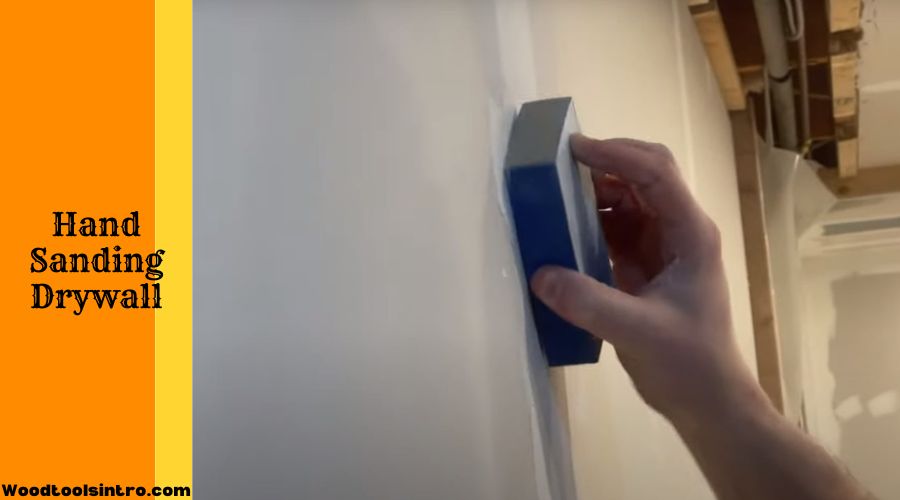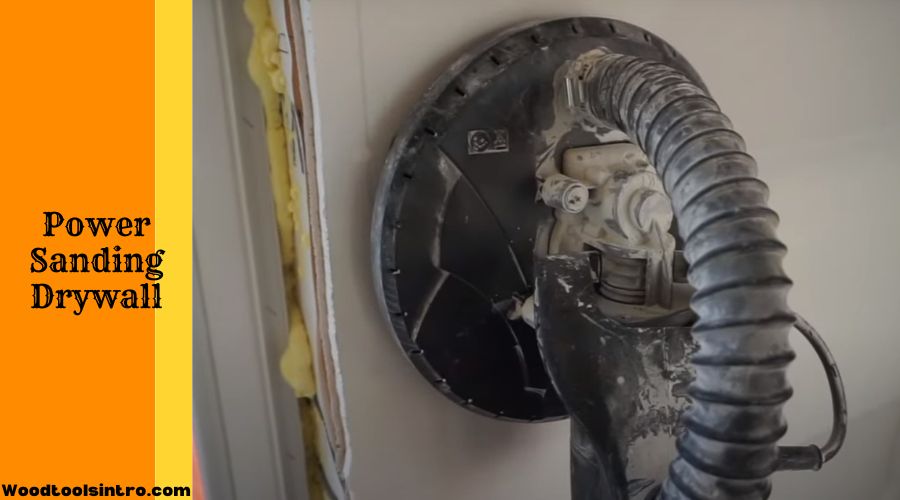Drywall sanding is a very crucial step for home renovation. Sanding makes the drywall surface smooth and even, which is most needed before applying primer and paint. But hand sanding vs power sanding better drywall?
Hand sanding is ideal for small and intricate jobs on drywall. On the other hand, power sanding is best for quick and fine finishing on larger drywall surfaces.
In this guide, we will explain the details of hand sanding and power sanding. You will know their advantages and disadvantages, which will help you make a better decision to choose hand or power sanding process.
So, let’s go ahead!
Hand Sanding On Drywall

Hand sanding refers to rubbing a drywall board manually. Making a drywall surface smoother with hand sanding requires a lot of effort, patience, time and skill. Some manual tools, including sandpaper, sanding blocks, and sanding sponges, are required to make the surface smoother. As done by hand, the user can get better control of pressure and movement when sanding.
The first-hand sanding technique is removing tape, stapling unnecessary material and loosening dust from the surface. Then, maintaining sequence is important for sanding a rough surface to make it smoother.
So, using two or three sandpapers in a sequence is the best practice for better results. In the meantime, remember to protect yourself during hand sanding is recommended.
Advantages Of Hand Sanding
- Hand sanding is the easiest way to sand on specific areas (corners, edges, or irregular surfaces) where added care is needed. You will get better control and precision in hand sanding.
- Hand sanding is very effective and convenient for small projects and local repairs. Hand sanding is the best option to send it to a targeted space in a small room or place.
- Manual hand sanding needs very little equipment, and the equipment is easy to carry and transport. Besides, you can rely on hand sanding where there are no electricity options.
Disadvantages Of Hand Sanding
- Hand sanding is a very time-consuming process. It needs far more time than power sanding to make a drywall board smoother and fine in finish.
- Hand sanding on a larger project is very hard. Even hand sanding can often create pressure on muscles and make you tired.
- The ultimate result of hand sanding depends on the sanding skill. If you need more skill, then the final result may satisfy you.
Power Sanding On Drywall

Power sanding refers to the sanding process with an electric-operated machine. It works excellently to remove existing components from a surface and make it smoother and polished. Power sanding requires no other tools without a pneumatic and electric sander. There are three main types of power sander tools: orbital, disc, and belt.
The most recommended technique for power sanding is to grip the Machine firmly. If you hold the tool correctly, the power sanding will be equal and will sand equally everywhere. Besides, make sure the Machine is running straight to the stretch. Running the sanding power tool on the drywall surface is the last power sanding technique.
Advantages Of Power Sanding
- Power sanding is far speedier and more effective than the hand sanding process. It can complete sanding in a larger project within a short time. Overall, a power sander makes easier the sanding task for professionals.
- Power sanding provides more smoother, polished drywall surface than hand sanding. It can adjust the sanding evenly through the whole surface.
- Compatibility of sanding versatile surfaces is another great advantage of power sanding tools. Due to the various sizes available, power tools can perform nicely for sanding on textured ceilings or curved corner surfaces.
Disadvantages Of Power Sanding Tool
- The initial purchasing cost and further maintenance cost of power tools are higher. Since power tools need proper care to extend their life span, their maintenance cost is a mandatory cost which is not needed for hand sanding.
- The power sanding tools users should have basic skills and knowledge to operate the tools. So, using the power sander tool is difficult for newbies. Even the newbies can damage the drywall surface without proper sanding skills.
Hand Sanding vs Power Sanding Drywall: Which One Choose?
Hand sanding vs. power sanding drywall, which one is better depends on some factors. Consider the things below.
Project Size and Scope
A power sander is ideal for larger projects. On the contrary, hand sanding is recommended for smaller projects.
Time Constraints
Using a hand tool may be perfect when you have enough time to sand a drywall. Using a power tool is important for sanding within a short time.
Skill and Experience
Using power sanding tools needs enough experience. Otherwise, the sanding result may go completely wrong. If you have enough power-skill sanding tools, go with it. Otherwise, go with the hand sanding process.
Surface Condition
A power sanding tool would be the perfect choice if your drywall has a significantly uneven surface. Do note that the power sander effectively makes the surface smoothest. However, hand sanding is perfect for getting a polished, smaller surface.
Dust Control and Cleanup
Good to know that hand sanding produces more dust than power sanding. If you can handle dust and contamination, then go with hand sanding. On the other hand, use the power sander if you don’t want to meet with dust and contamination.
Cost Considerations
Power sanding is more expensive than hand sanding. If you want to use a power sander, keep enough budget to purchase equipment and maintenance costs.
Tips For Effective Drywall Sanding
Here are some proven tips that can make your drywall sanding excellent.
- Remove all unnecessary things like dust, tape, and paint from the drywall before sanding
- Arrange the required tools and equipment as per your sanding method
- Wear hand gloves, eye protector glasses and PPE to protect yourself from grit and dust
- Use the recommended 120-grit or 150-grit sandpaper to get a fine finish
- Please don’t cover the gouges and grooves; rather, fill them in a proper way
- Use a handheld light to notice the significant spotted areas on drywall
- Prime the drywall before sanding on it to get perfection on the drywall surface
- Use a sanding sponge to sand difficult-to-reach corners.
- Avoid over-sanding to prevent damage.
Last Words
We hope you got the points and can now make the difference between hand sanding and power sanding drywall. Each sanding method has its advantages and disadvantages.
So, the better sanding method depends on the user’s preference, budget and sanding skill. Besides, drywall conditions also impact the types of sanding methods. It would be better to choose a method according to your needs.

I am Imtiaj Islam. I am a wood working enthusiast, having 6 years of experience in carpentry work. I have a BBA graduate degree from Chittagong College. I got vocational training on wood works from Korean Polytechnic out of the quest and zest he has for carpentry as well. I take several wood projects and keep testing different woodworking tools for comfortable and perfect work. I just love playing with woods and machines.
